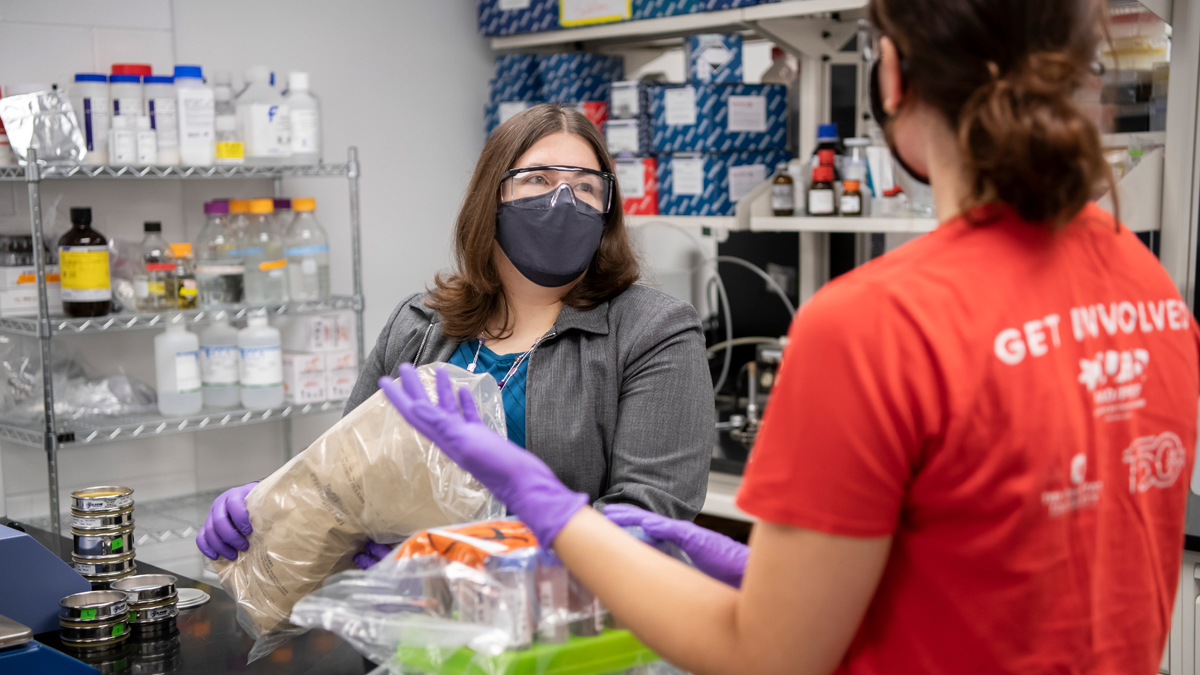Creating healthier space travel environments
Dannemiller's expertise is helping astronauts breathe easier

Karen Dannemiller’s innovative research typically improves the air quality in our homes on Earth. However, a few years back her expertise caught NASA’s eye.
NASA was analyzing the airborne particles floating around the International Space Station to keep the astronauts traveling 250-plus miles above the planet healthy. But scientists also wanted to study how to avoid unhealthy conditions for future long-term space travel — say, to Mars.
And Dannemiller’s understanding of microbial communities in dust — which can include fungi, bacteria and viruses — and what that means to our health was what NASA needed in its quest for answers.
“A lot of what we do is targeted to vulnerable communities, improving living spaces to reduce illnesses like childhood asthma,” said Dannemiller, whose Indoor Environmental Quality research group at Ohio State combines cutting-edge techniques from engineering and epidemiology.
“Working with NASA has been exciting. We’ve found a lot of our research can be applied to help keep astronauts healthy and support them on their missions.”
Astronauts have strict cleaning regimens. However, spacecrafts are confined spaces that can turn into breeding grounds for harmful mold, dust and bacteria. The spacecraft Mir, for example, had such extensive mold growth when it was decommissioned that there were concerns about wiring and window seals degrading, a frightening scenario when you’re more than 250 miles above Earth.
“A lot of that was because they weren’t controlling the humidity properly,” Dannemiller said. “Dust is a really important reservoir for microbes and if your humidity gets too high it can cause growth.”
By analyzing and modeling the space dust provided by NASA, Dannemiller determined the levels of humidity that could lead to dangerous microbial growth.
Fortunately, improvements in relative humidity control were made in construction of the International Space Station (ISS) to help prevent mold growth. While ISS typically maintains a healthy relative humidity level, Dannemiller’s modeling techniques helped predict what would happen in an unexpected circumstance, such as a ventilation system failure, and what remediation steps would fix it.
“Karen got a lot of answers for us,” said Marit Meyer, a research aerospace engineer at the NASA Glenn Research Center who recruited Dannemiller for the project. “She brought an expertise to the table we didn’t have, the microbial piece related to indoor dust. And she was able to determine when the microbes really start multiplying and growing. Knowing that is critical in planning the climate control in new vehicles.”
New vehicles such as the long-term moon-orbiting Gateway, which will be built as part of the Artemis mission in 2024 and have periods of dormancy. Also, it’s critical research for potential months-long journeys to Mars.
Meyer also said Dannemiller could play an important role when astronauts return home.
“There’s a lot of interest in what kind of microbes we are going to find in future long-term missions,” Meyer said. “Will new types of microbes show up that we’ve never seen before? It is a hot topic, and Karen is really poised to do some of the future work on that.”
Until then, Dannemiller and her research team will continue their work in analyzing the dust on the space station to keep astronauts healthy. However, most of her research is aimed at helping people live healthier lives inside their homes, especially in creating cleaner environments for children with asthma.
“If we can improve living spaces, we can reduce illnesses,” Dannemiller said. “That’s what it’s always been about for me.”